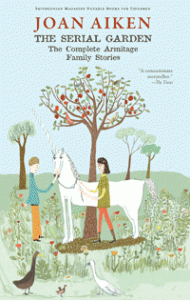 I first encountered this series in the late 70s, while a teen, and it hooked me to the point where I’ll always note a Sheri S. Tepper book coming out, even though some have gotten a little didactic. But this series? Not only is it is awesome, but it interlocks with two other trilogies set in the same world and with many of the same characters.
I first encountered this series in the late 70s, while a teen, and it hooked me to the point where I’ll always note a Sheri S. Tepper book coming out, even though some have gotten a little didactic. But this series? Not only is it is awesome, but it interlocks with two other trilogies set in the same world and with many of the same characters.
While The True Game Trilogy starts in what seems to be a fantasy world, where different people manifest different Talents that play off each other in a massive societal game. Protagonist Peter is part of a school that teaches its students how to play the game, and part of the joy of the book is the detail with which the game is worked out:
“Talisman,” I blurted. “Talisman to King’s Blood Four.”
“Good.” Gervaise actually smiled. “Now, tell me why?”
“Because our side can’t see what pieces may be hiding behind the King. Because Talisman is an absorptive piece, that is, it will soak up the King’s play. Totem is reflective. Totem would splash it around, we’d maybe lost some pieces…”
“Exactly. Now, students, visualize if you please. We have King, most durable of the adamants, whose ‘blood,’ that is, essence, is red light.Demons, most powerful of the ephemera, whose essence is shadow. Tragamors making barriers at the sides of the Demesne. The player is a student, without power, so he plays Talisman, an absorptive piece of the lesser ephemera. Talisman is lost in play, ‘sacrificed’ as we say. THe player gains nothing by this,but neither does he lose much, for with this play the Demesne is changed, and the game moves elsewhere in the purlieu.”
Peter thinks himself Talent-less but when it does emerge, it leads to danger connected to the secrets around Peter’s birth.
The magic system is lovely, there’s two strong female characters in the form of Jillian and Mavin Manyshaped,ach of whom gets her own later trilogy (with its own version of earlier events), the characters are engaging and/or often disturbing, and the plot is nicely put together, slowly shifting over to reveal itself to actually be science fiction.
There are others of Tepper’s works that I’d recommend — I adore the Marianne series, for one, and I reread Grass on a regular basis, as well as The Gate to Women’s Country. But this series was my gateway to Tepper and as such it has a pull for me above all the rest. If you want to know more about Tepper hereself, here’s an interview she did with Neal Szpatura for Strange Horizons in 2008 and an interview with John Scalzi.
#sfwapro








